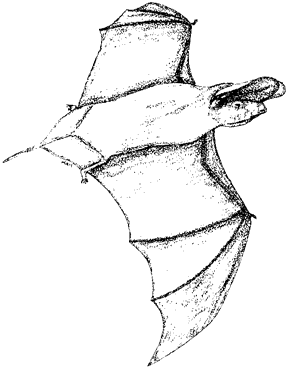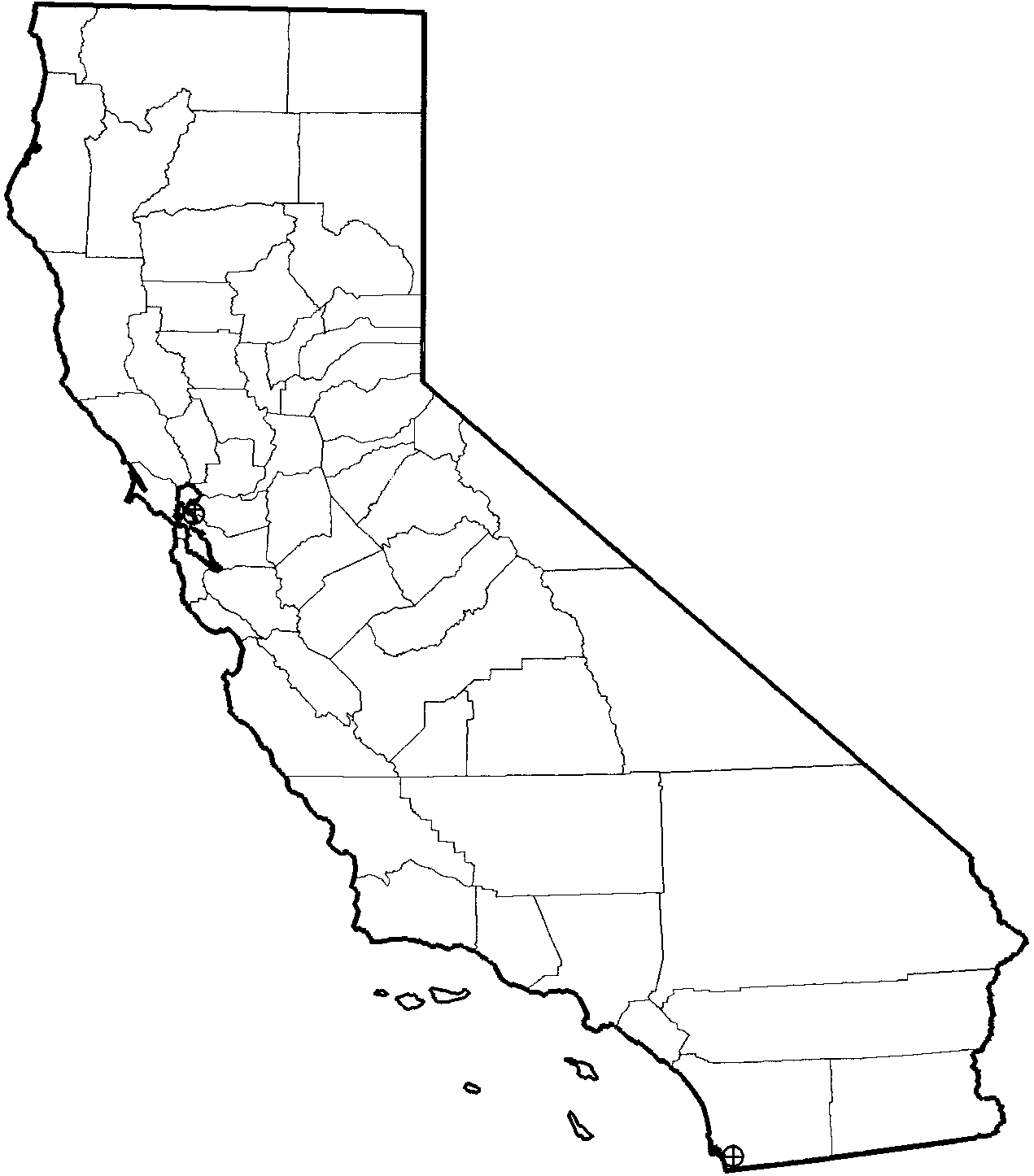
Big Free-tailed Bat
Distribution, Abundance, and Seasonality
The big free-tailed bat is rare in California. Records of the species are from urban areas of San Diego Co., and vagrants found in fall and winter. A probable vagrant was collected in Alameda Co., but this record is suspect. Big free-tailed bats in other areas prefer rugged, rocky terrain. Found to 2500 m (8000 ft) in New Mexico, southern Arizona, and Texas. Probably a yearlong resident.

Range Map
Specific Habitat Requirements
Feeding: Feeds principally on large moths. Takes a variety of other flying insects as well. Often caught foraging over water sources.
Cover: Roosts in crevices in high cliffs or rock outcrops.
Reproduction: Probably does not breed in California. In other areas, small nursery colonies are formed in rocky crevices in high cliffs.
Water: No data found.
Pattern: Prefers rugged, rocky canyons.
Species Life History
Activity Patterns: Nocturnal. Emerges late in the evening.
Seasonal Movements / Migration: Probably a yearlong resident. Many individuals wander widely in autumn, resulting in records far out of the normal range.
Home Range: No data found.
Territory: May be found in small groups.
Reproduction: Young are born in June and July; births peak in late June. A single young is born annually. The young are capable of flight in August to mid-September.
Niche: A moth strategist and rapid flier.
Comments: Rare in California. A California Species of Special Concern (Williams 1986).
Sources & References
California Department of Fish and Game, 1999.
California's Wildlife, Sacramento, CA.
Written by: J. Harris, reviewed by: P. Brown, edited by: D. Alley, R. Duke
Barbour, R. W., and W. H. Davis. 1969. Bats of America. Univ. of Kentucky Press, Lexington. 286pp. Borell, A. E. 1939. A colony of rare free-tailed bats. J. Mammal. 20:65-68. Constantine, D. G. 1961. Spotted bat and big free-tailed bat in northern New Mexico. Southwest. Nat. 6:92-97. Easterla, D. A. 1973. Ecology of the 18 species of Chiroptera at Big Bend National Park, Texas. Northwest Mo. State Univ. Studies 34:1-165. Easterla, D. A., and J. O. Whitaker, Jr. 1972. Food habits of some bats from Big Bend National Park, Texas. J. Mammal. 53:997-890. Findley, J. S., A. H. Harris, D. E. Wilson, and C. Jones. 1975. Mammals of New Mexico. Univ. New Mexico Press. Albuquerque. 360pp. Hall, E. R. 1946. Mammals of Nevada. Univ. California Press, Berkeley. 710pp. Huey, L. M. 1932. The large free-tailed bat in San Diego, California. J. Mammal. 13:160. Huey, L. M. 1954. Second record of Tadarida molossa from San Deigo, Calif. J. Mammal. 35:435-436. Ross, A. 1967. Ecological aspects of the food habits of insectivorous bats. Proc. West. Found. Vertebr. Zool. 1:205-264. Williams, D. F. 1986. Mammalian species of special concern in California. Calif. Dept. Fish and Game, Sacramento. Admin. Rep. 86-1. 112pp.
California Animal Facts | California's Wildlife